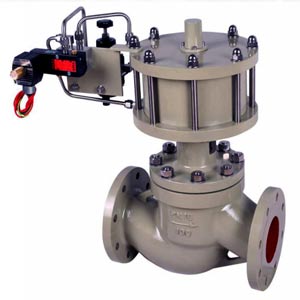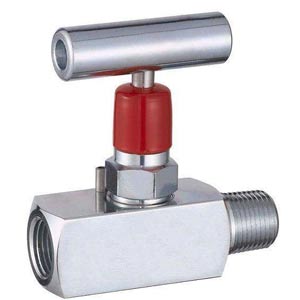General requirements
1) The valve must be manufactured in accordance with its corresponding technical standards, design drawings, technical documents and the provisions of the order contract. And after passing the inspection, it can be delivered from the factory.
2) When there are special requirements, they should be stipulated in the order contract, and inspection and delivery should be made according to the stipulated requirements.
3) The manufacturer shall supply the user within the time limit specified in the contract
product.
Coating and protection
1) Except for austenitic stainless steel and copper valves, the non-processed outer surfaces of other metal valves should be painted or coated according to the contract.
2) Non-painted or non-rust-proof processed surfaces must be painted or sprayed with an easily removable rust-proof layer. The inner cavity and parts of the valve shall not be painted, and there shall be no dirt and rust spots.
3) After the inspection and test are completed, the debris and water inside the valve should be cleaned up and blown dry for transportation. The valve should be protected to avoid mechanical damage and atmospheric corrosion during transportation, and ensure that it can meet the requirements of on-site storage at least 18 months before installation.
4) The manufacturer’s standard paint is suitable for non-machined surfaces. Bronze, stainless steel and high alloy valves should not be painted
5) Austenitic stainless steel valves should be protected to avoid chlorine corrosion due to exposure to salt spray or the atmosphere during cleaning, manufacturing, testing and storage. If trucks are used for transportation in areas where chloride salts are used, protection should also be provided. Should consider using moisture-proof materials for sealing or wrapping.
6) For carbon steel and ferritic alloy steel flanges and butt-welded valves, the sealing surface of the end flange and the bevel should be coated with a rust-proof coating that can be removed or removed with a solvent before the end protection is installed.
7) The flange end and butt-welding end of the valve end surface should be protected by metal plate, hard fiberboard, thick plastic plate or wooden board, and tightly attached to the valve body. Valves with threaded or socket ends and drain ports should be protected with metal, wooden or plastic plugs.
8) Thread and socket welding openings should be sealed with plastic or metal protective parts to prevent dust or other foreign objects from entering the valve.
Sign
1) Unless otherwise specified, American standard valves are permanently marked according to API 600, API6D or MSSSP-25, and national standard valves are marked according to GB/T 12220. The marking should include the melting furnace number or the melting mark of the manufacturer.
2) Only when it is not feasible to apply the required mark on the body, the mark can be applied on the nameplate. However, the arrow indicating the flow direction of the valve must be marked on the valve body.
3) The label should be firmly fixed on the obvious part of the valve, and its content must be complete and correct. And should comply with the requirements of GB/T 13306, and its materials should be made of stainless steel, copper alloy or aluminum alloy.
4) The paint used for color code and marking shall not contain any harmful metal or metal salt, such as tin, zinc, lead, sulfur, copper or chloride, etc., which can cause corrosion in the hot state, and the paint shall be resistant to salt water, Corrosion in tropical environments or similar conditions.
5) For small-sized objects that are difficult to mark, use stainless steel wire to tie stainless steel signs to mark.
package
1) After the valve passes the test, the oily dirt on the surface should be removed, and the remaining test medium should be removed from the inner cavity.
2) Blind plates shall be used at both ends of the valve to protect the flange sealing surface, welding end or threaded end and the inner cavity of the valve. The blind plate should be made of wood, wood fiberboard, plastic or metal and fixed with bolts, steel clips or locking devices.
3) Valves should be equipped with fillers containing corrosion inhibitors or other high-quality fillers that meet the design drawings and usage requirements, and the exposed threads (such as valve stems, pipes) should be protected.
4) Before the equipment is shipped, the manufacturer should properly pack each equipment according to GB/T13384 to avoid damage to the equipment during transportation. The device should be fixed at the bottom of the box to prevent the device from shaking in the box during transportation.
5) Every cargo container, crate, and packing box must be painted on or on the side or in other ways with clear and readable transportation protection signs, such as waterproof, sun-proof, and no upside-down signs, and the lifting center of gravity must be marked. Strictly observe when loading and unloading.
6) If there are special tools, they should be packaged separately and shipped together with the list of special tools. The equipment number and the words “special tools” should be marked on the outside of the box.
7) If the manufacturer provides spare parts, they should be packaged separately for long-term storage. At the same time, the spare parts should have necessary marks for easy identification in the future.
8) If necessary, additional protection should be provided for equipment and parts that are easily damaged by water and moisture, and parts with non-drainable gaps or gaps should be covered to prevent water and debris from entering people during the entire transportation process.
transport
1) The opening and closing parts of the factory ball valve and plug valve should be in the open position, the opening and closing parts of other valves should be in the closed position, and the opening and closing parts of the check valve should be in the closed position and fixed.
2) Valves should be packed and shipped. All types of valves with a nominal size less than DN40 should be packed and shipped. For valves with a nominal size of no less than DN50, they can be packed in bulk or in other ways, but must be guaranteed not to be damaged or damaged during normal transportation. Missing parts.
3) The land transport packaging box should be placed in a weatherproof boxcar, and the manufacturer should cover it with a rain-proof canvas. If it is transported by sea, take measures to prevent the internal and external surfaces of the equipment from being corroded by the salt spray of the marine environment.
4) The transportation package should be complete and neat. The internal cargo should be evenly distributed and loaded, neatly placed, properly lined, internal cargo fixed, and the center of gravity position as low as possible.
5) The wooden boxes for loading and shipping must be fixed to prevent damage to the integrity of the wooden boxes due to vibration during transportation.
6) Pay attention to safety during loading and unloading. Lifting equipment must not be used to lift heavy objects exceeding its rated load.
7) If there is a lifting position marked on the outside of the packing box, it must be strictly implemented to prevent accidental damage to the valve.
8) Export valves should be shipped in containers as much as possible.
9) The product certificate, product description and packing list are attached to the valve when it leaves the factory.















